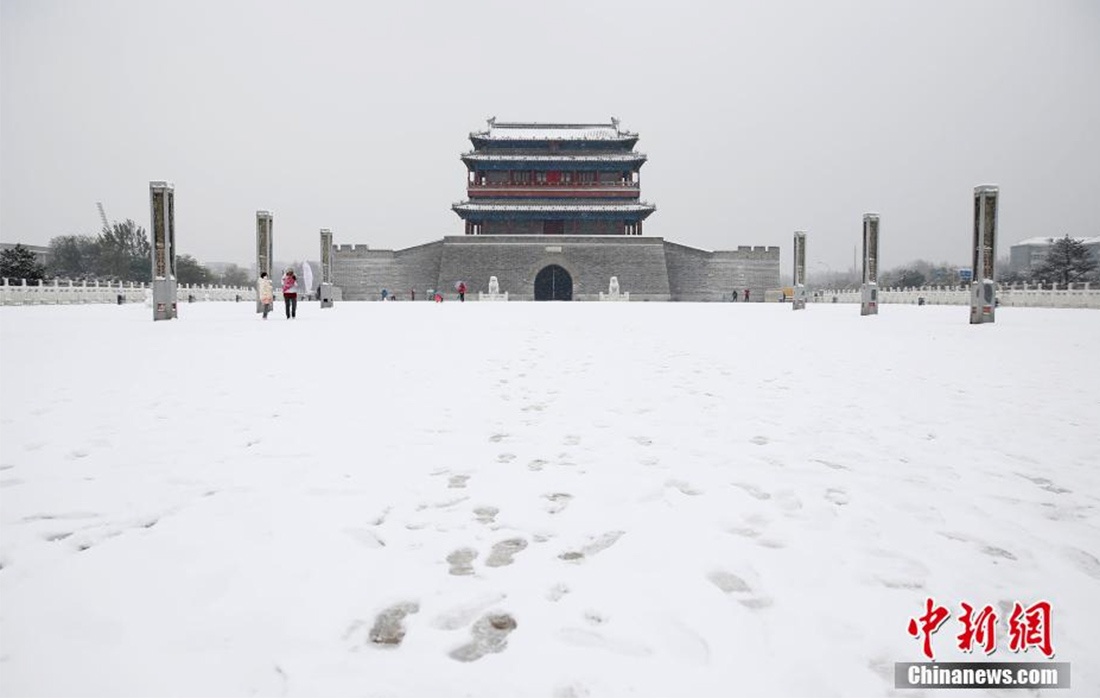Editor's Note:
Beijing is preparing 14 heritage sites along the city's Central Axis, including Tiananmen Square and Temple of Heaven, by 2030 to match the application criteria for UNESCO, so as to get them added to the World Heritage List by 2035. The Central Axis of Beijing is 7.8 kilometers long and covers 65 percent of the area of the old city. It starts in the south of the city at Yongdingmen and ends at the Drum and Bell Towers in the north. (Photos: Chinanews.com, Xinhua, VCG)
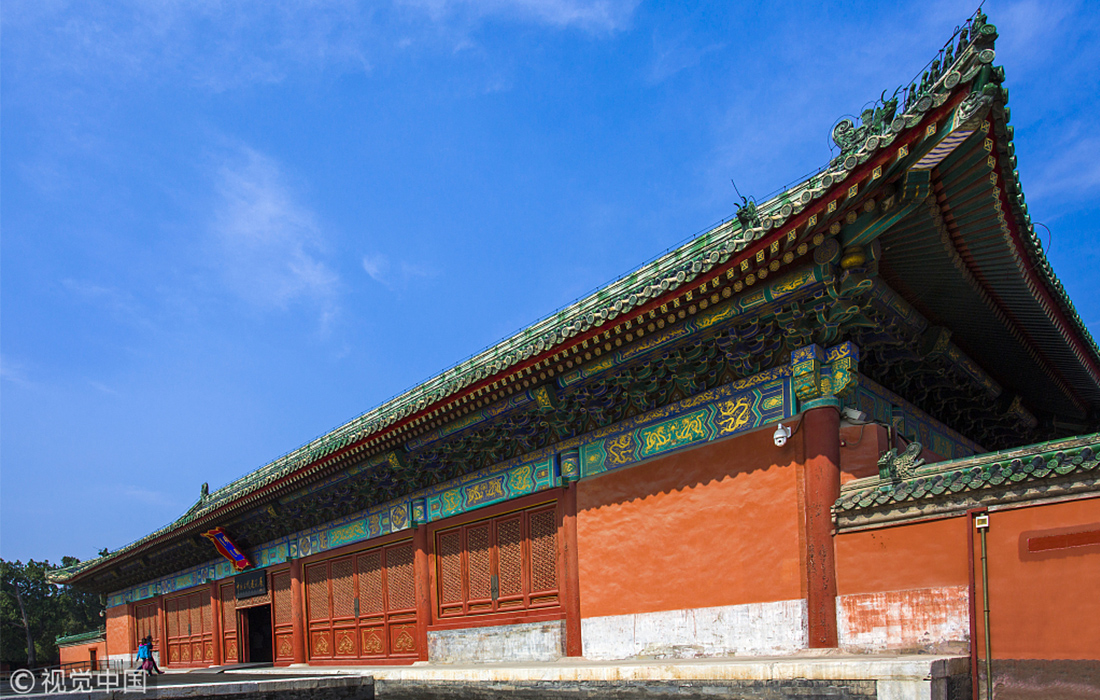 The photo shows the Temple of Agriculture, also known as Xiannongtan in Chinese, which was built in 1420 and it was used by the Ming and Qing emperors to perform sacrifices. Photo: VCG
The photo shows the Temple of Agriculture, also known as Xiannongtan in Chinese, which was built in 1420 and it was used by the Ming and Qing emperors to perform sacrifices. Photo: VCG 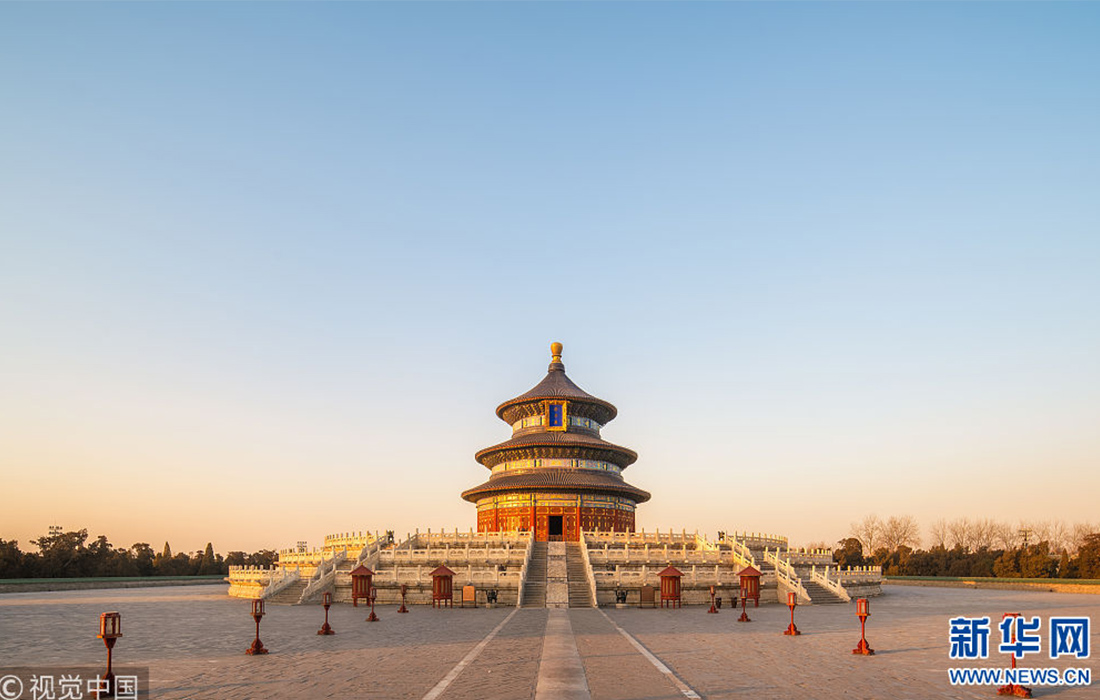 The photo shows the Temple of Heaven, which was constructed between 1406 and 1420. It was visited by the emperors of the Ming and Qing Dynasties for an annual ceremony to pray to heaven for a good harvest. Photo: Xinhua
The photo shows the Temple of Heaven, which was constructed between 1406 and 1420. It was visited by the emperors of the Ming and Qing Dynasties for an annual ceremony to pray to heaven for a good harvest. Photo: Xinhua 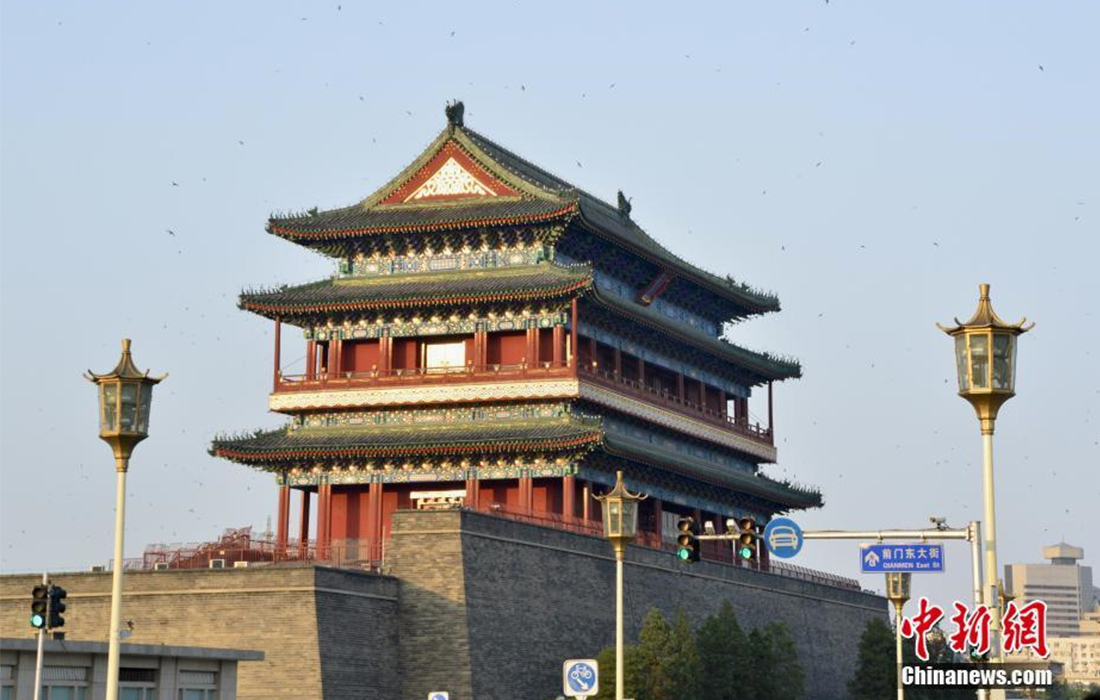 The photo shows Zhengyangmen, the south gate for the inner city of Beijing‘s old city wall during the Ming and Qing Dynasties. It was originally built in 1419. Photo: Chinanews.com
The photo shows Zhengyangmen, the south gate for the inner city of Beijing‘s old city wall during the Ming and Qing Dynasties. It was originally built in 1419. Photo: Chinanews.com 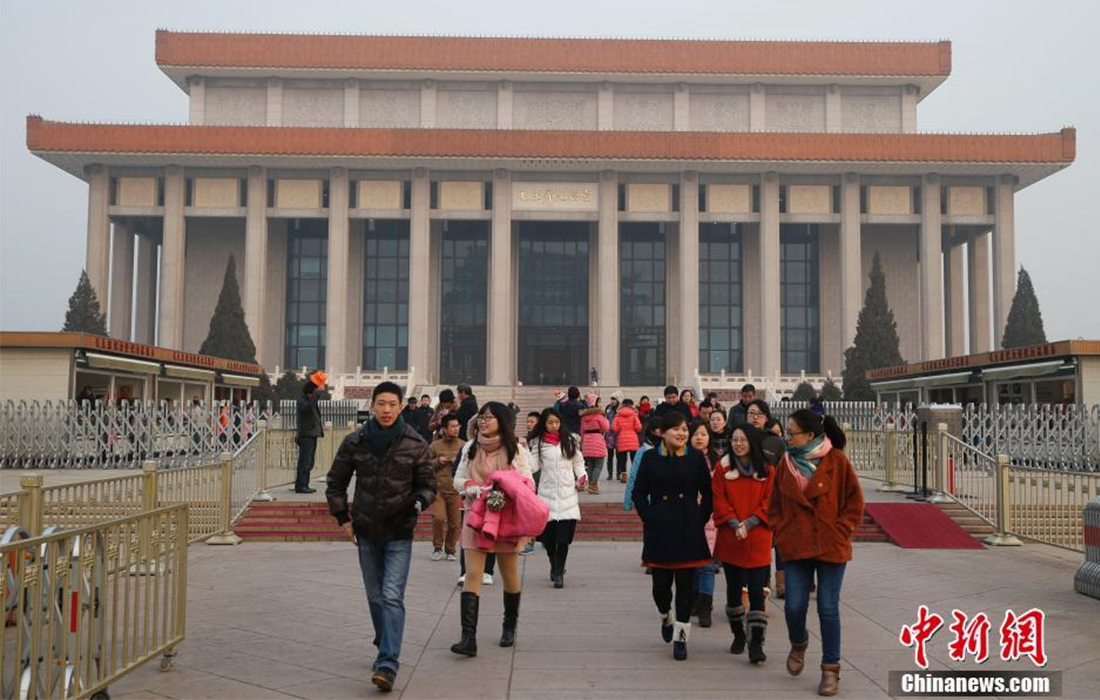 The photo shows the Mausoleum of Mao Zedong, built from 1976 to 1977 to commemorate Chairman Mao, at Tiananmen Square. Photo: Chinanews.com
The photo shows the Mausoleum of Mao Zedong, built from 1976 to 1977 to commemorate Chairman Mao, at Tiananmen Square. Photo: Chinanews.com 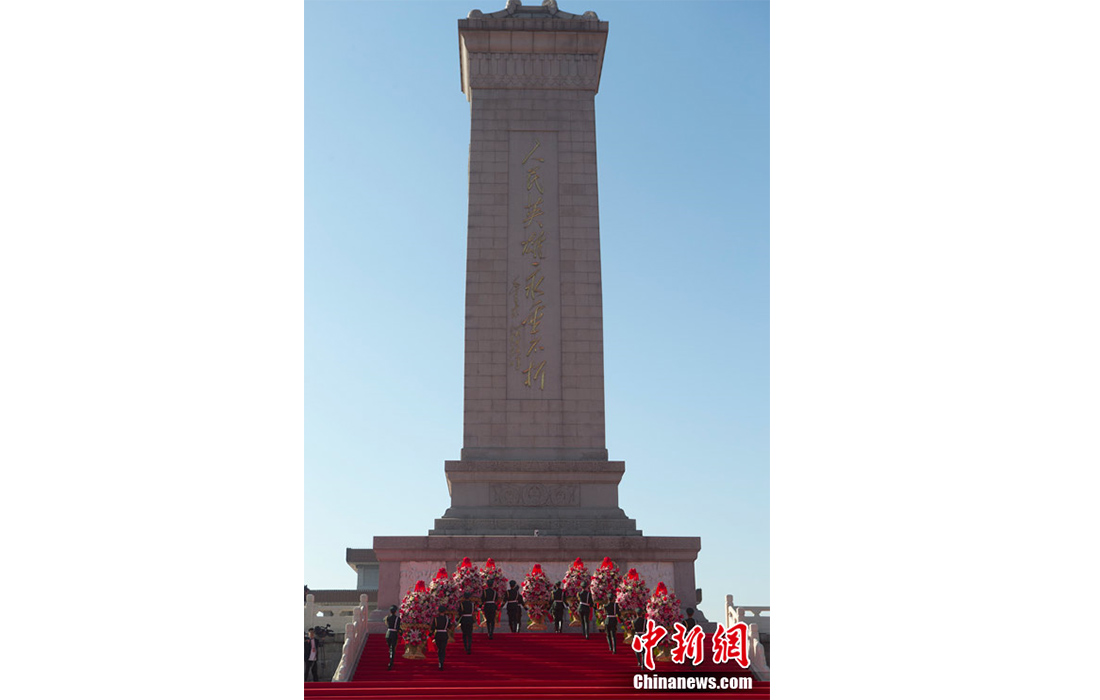 The photo shows the Monument to the People's Heroes, which is located in the southern part of Tiananmen Square. Construction of the monument lasted from 1949 to 1958. Photo: Chinanews.com
The photo shows the Monument to the People's Heroes, which is located in the southern part of Tiananmen Square. Construction of the monument lasted from 1949 to 1958. Photo: Chinanews.com 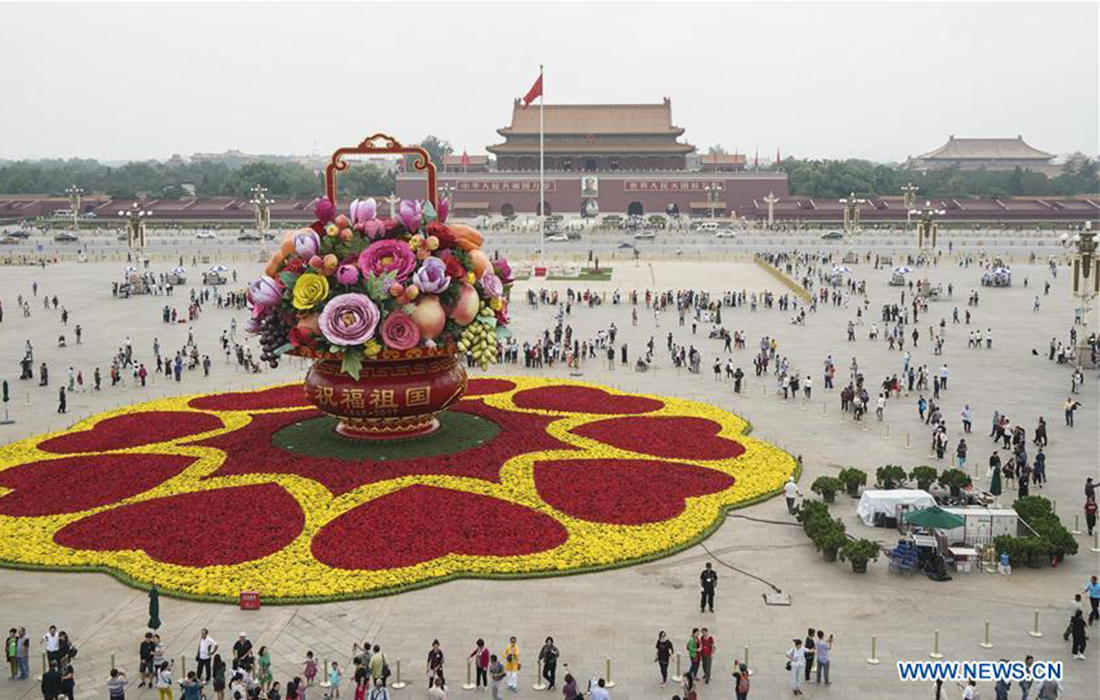 This photo, taken on September 25, 2017, shows Tiananmen Square decorated with parterres. Flowers were arranged in Tiananmen Square to welcome the Chinese National Day. Photo: Xinhua
This photo, taken on September 25, 2017, shows Tiananmen Square decorated with parterres. Flowers were arranged in Tiananmen Square to welcome the Chinese National Day. Photo: Xinhua 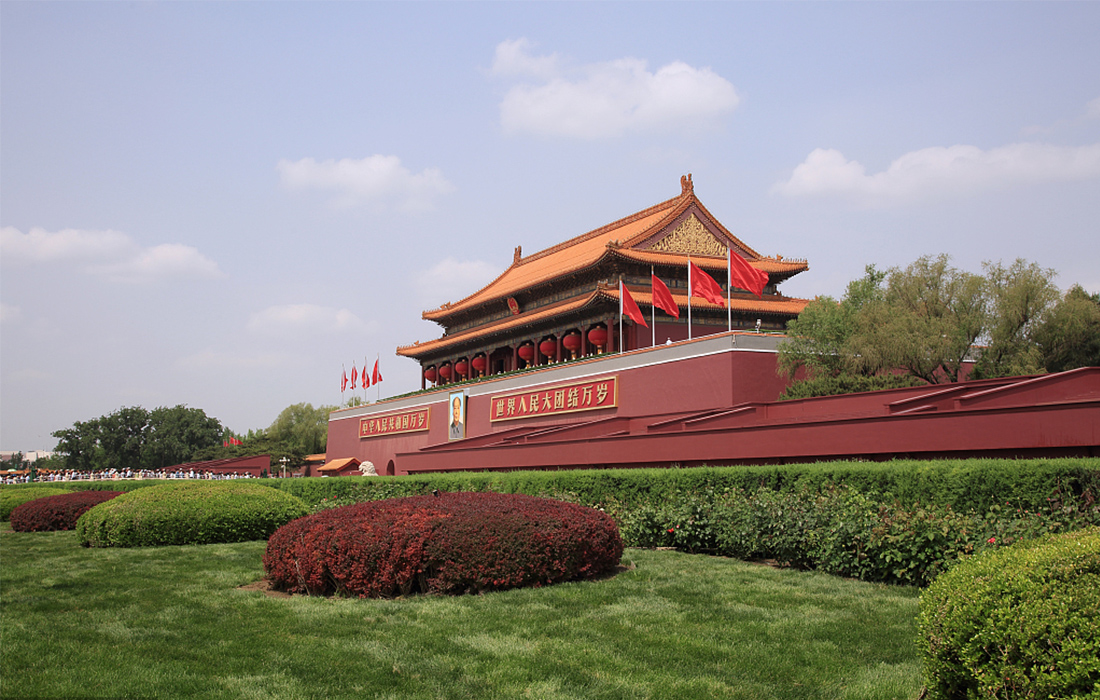 The photo shows the Tiananmen Rostrum, the main entrance of the Imperial City of the Ming and Qing Dynasties. It was first built in 1417 during the Ming Dynasty and is now a monumental gate in the center of Beijing. Photo: VCG
The photo shows the Tiananmen Rostrum, the main entrance of the Imperial City of the Ming and Qing Dynasties. It was first built in 1417 during the Ming Dynasty and is now a monumental gate in the center of Beijing. Photo: VCG 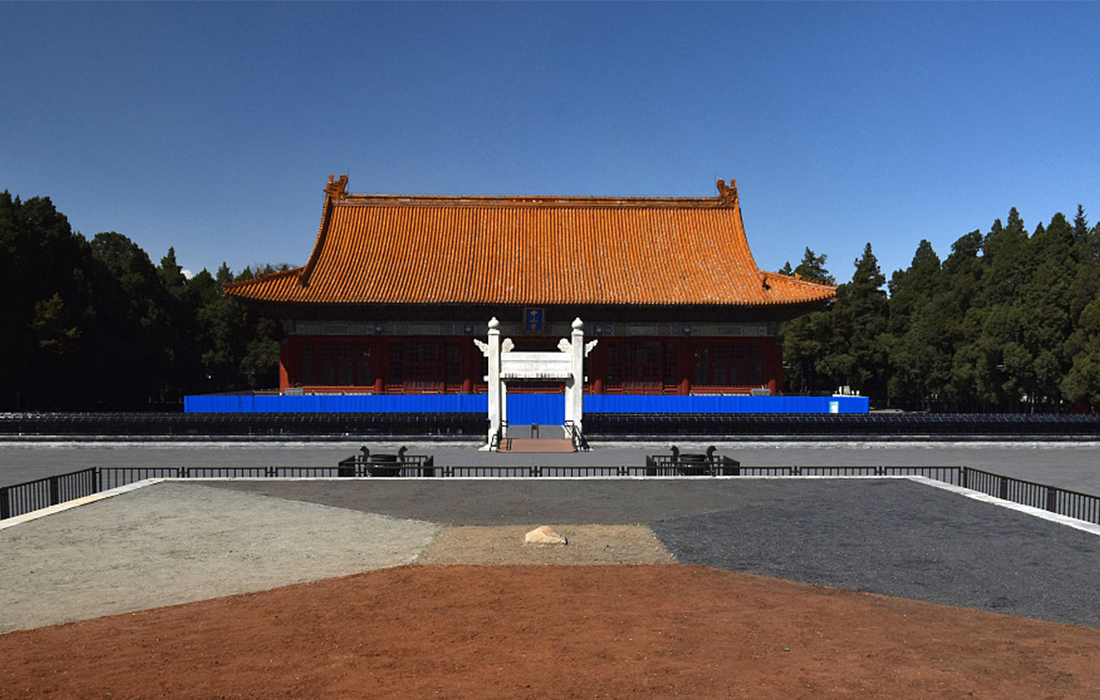 The photo shows the Shejitan, a Confucian altar, located in Zhongshan Park in Beijing. It was built in 1420 during the Ming Dynasty and was used to perform the national soil and grain ceremonies during the Ming and Qing Dynasties. Photo: VCG
The photo shows the Shejitan, a Confucian altar, located in Zhongshan Park in Beijing. It was built in 1420 during the Ming Dynasty and was used to perform the national soil and grain ceremonies during the Ming and Qing Dynasties. Photo: VCG 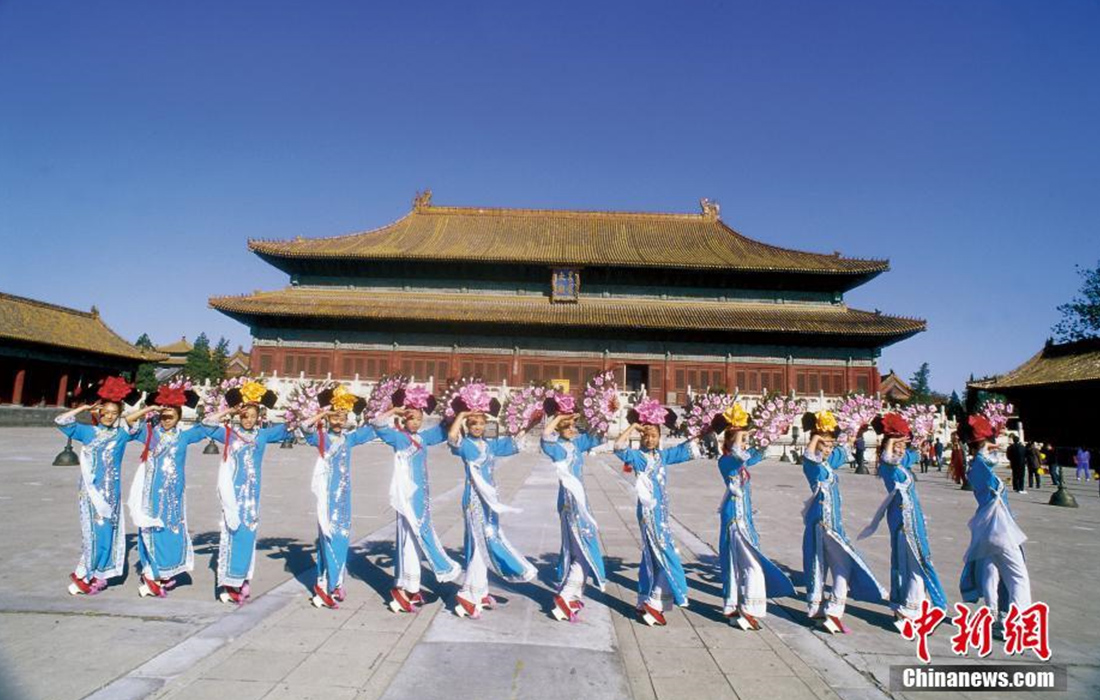 A photo taken on March 27, 2017, shows dancers performing in Manchu traditional costumes in front of the Imperial Ancestral Temple, also known as Taimiao, where sacrificial ceremonies were held in honor of the imperial family's ancestors during the Ming and Qing Dynasties. Photo: Chinanews.com
A photo taken on March 27, 2017, shows dancers performing in Manchu traditional costumes in front of the Imperial Ancestral Temple, also known as Taimiao, where sacrificial ceremonies were held in honor of the imperial family's ancestors during the Ming and Qing Dynasties. Photo: Chinanews.com 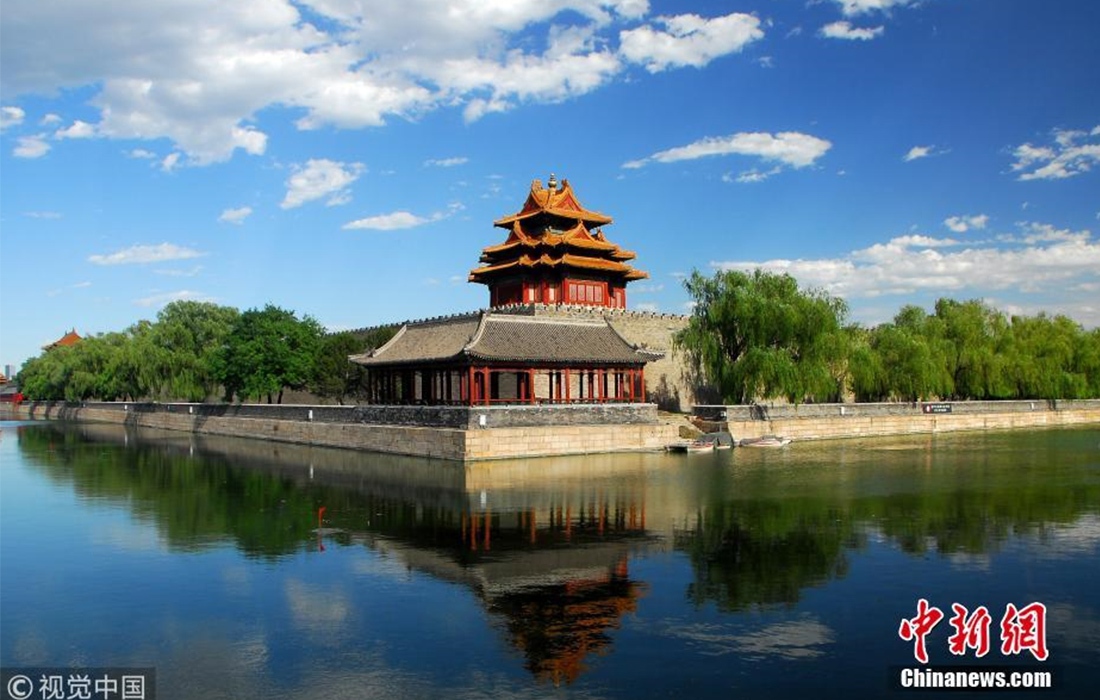 The photo shows a part of the Forbidden City, also known as the Palace Museum. It was built in 1406 for the former Chinese imperial palace, and was in use from the Ming Dynasty to the end of the Qing Dynasty. Photo: Chinanews.com
The photo shows a part of the Forbidden City, also known as the Palace Museum. It was built in 1406 for the former Chinese imperial palace, and was in use from the Ming Dynasty to the end of the Qing Dynasty. Photo: Chinanews.com 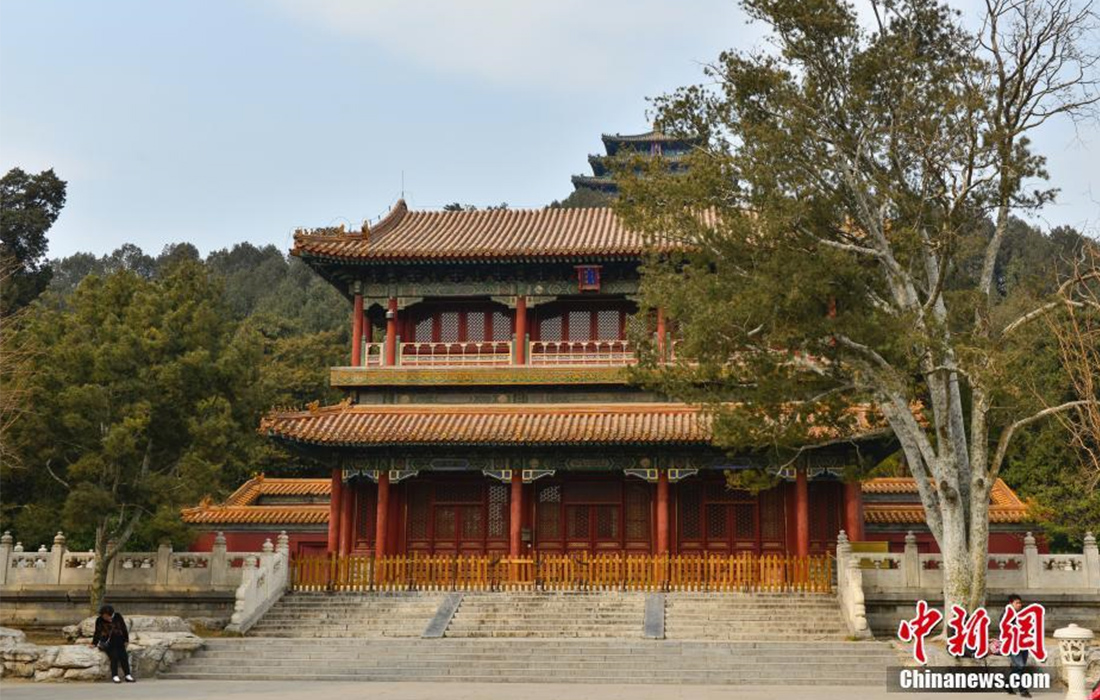 The photo shows the view of Jingshan. Located in the northern part of the Forbidden City, Jingshan held the imperial gardens for the emperors of the Yuan, Ming and Qing Dynasties. Photo: Chinanews.com
The photo shows the view of Jingshan. Located in the northern part of the Forbidden City, Jingshan held the imperial gardens for the emperors of the Yuan, Ming and Qing Dynasties. Photo: Chinanews.com 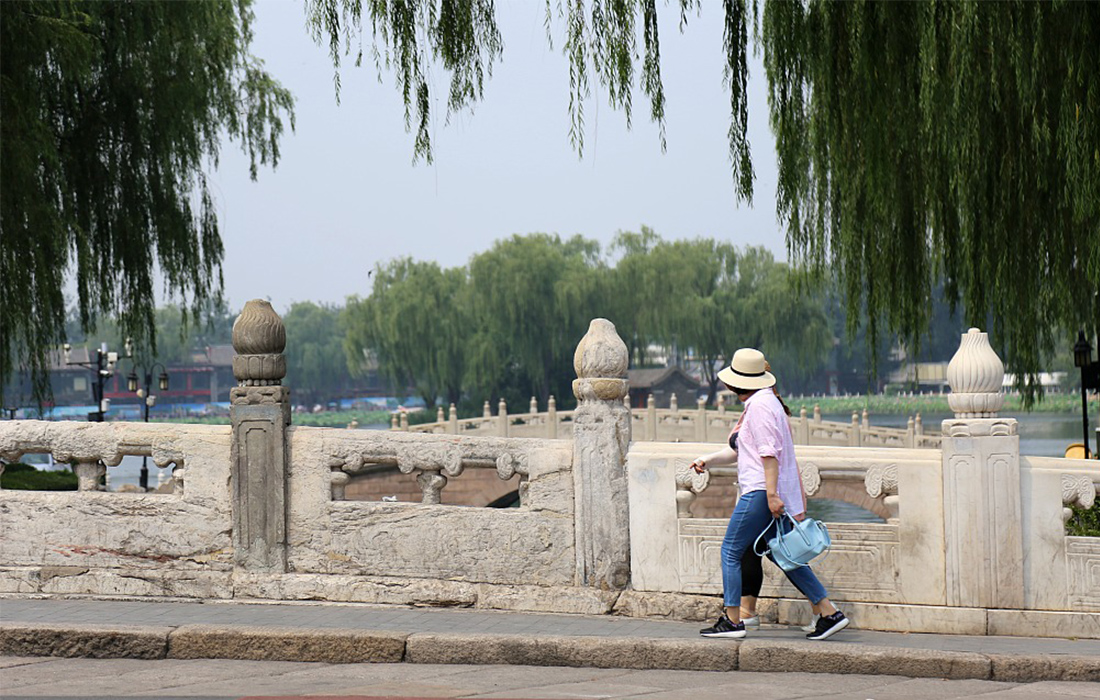 The photo shows the Wanning Bridge, which was originally built in 1285 during the Yuan Dynasty. Photo: VCG
The photo shows the Wanning Bridge, which was originally built in 1285 during the Yuan Dynasty. Photo: VCG 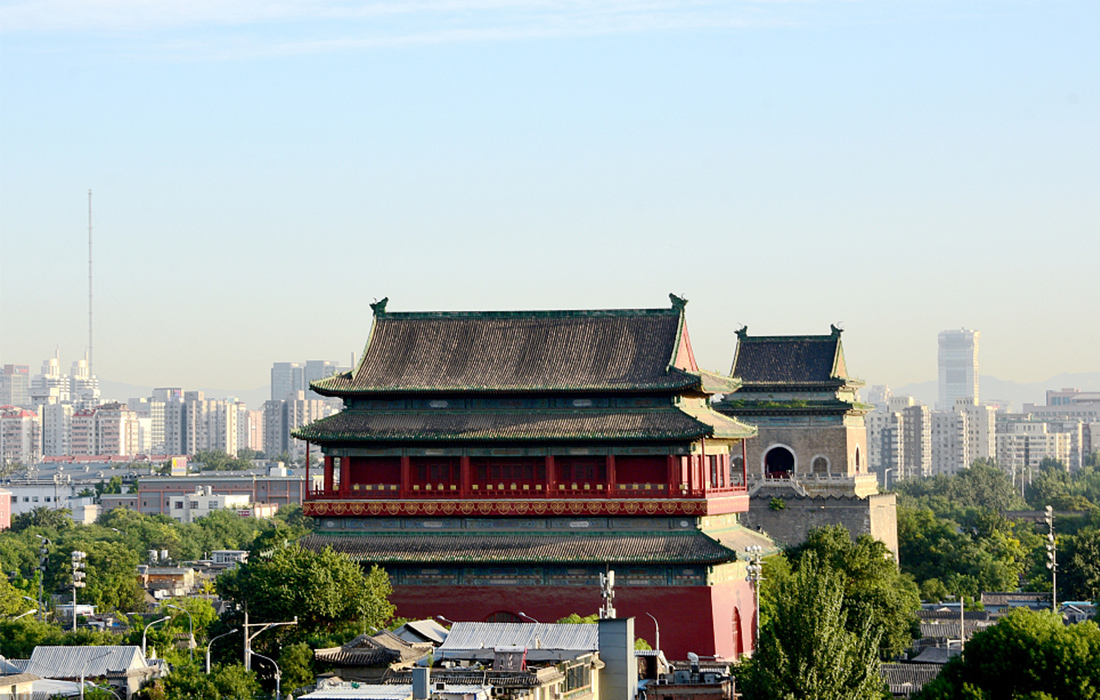 The photo shows the Drum and Bell Towers, the northern end of the Central Axis of Beijing. Originally built in 1272 during the Yuan Dynasty, they are used to indicate time during the Yuan, Ming and Qing Dynasties. Photo: VCG
The photo shows the Drum and Bell Towers, the northern end of the Central Axis of Beijing. Originally built in 1272 during the Yuan Dynasty, they are used to indicate time during the Yuan, Ming and Qing Dynasties. Photo: VCG














